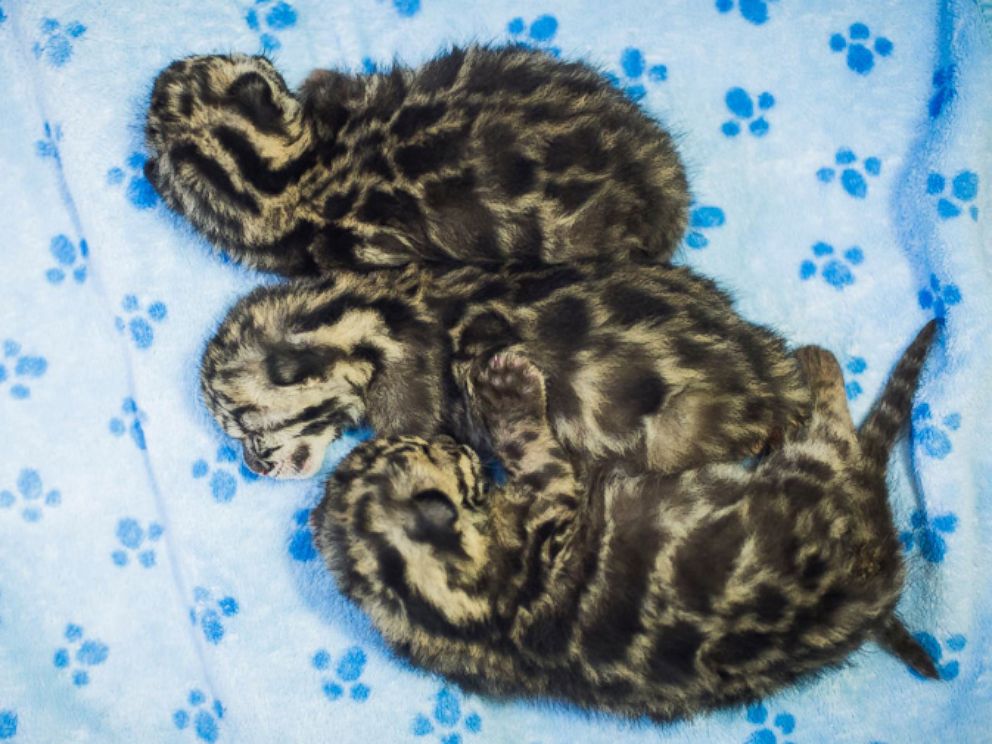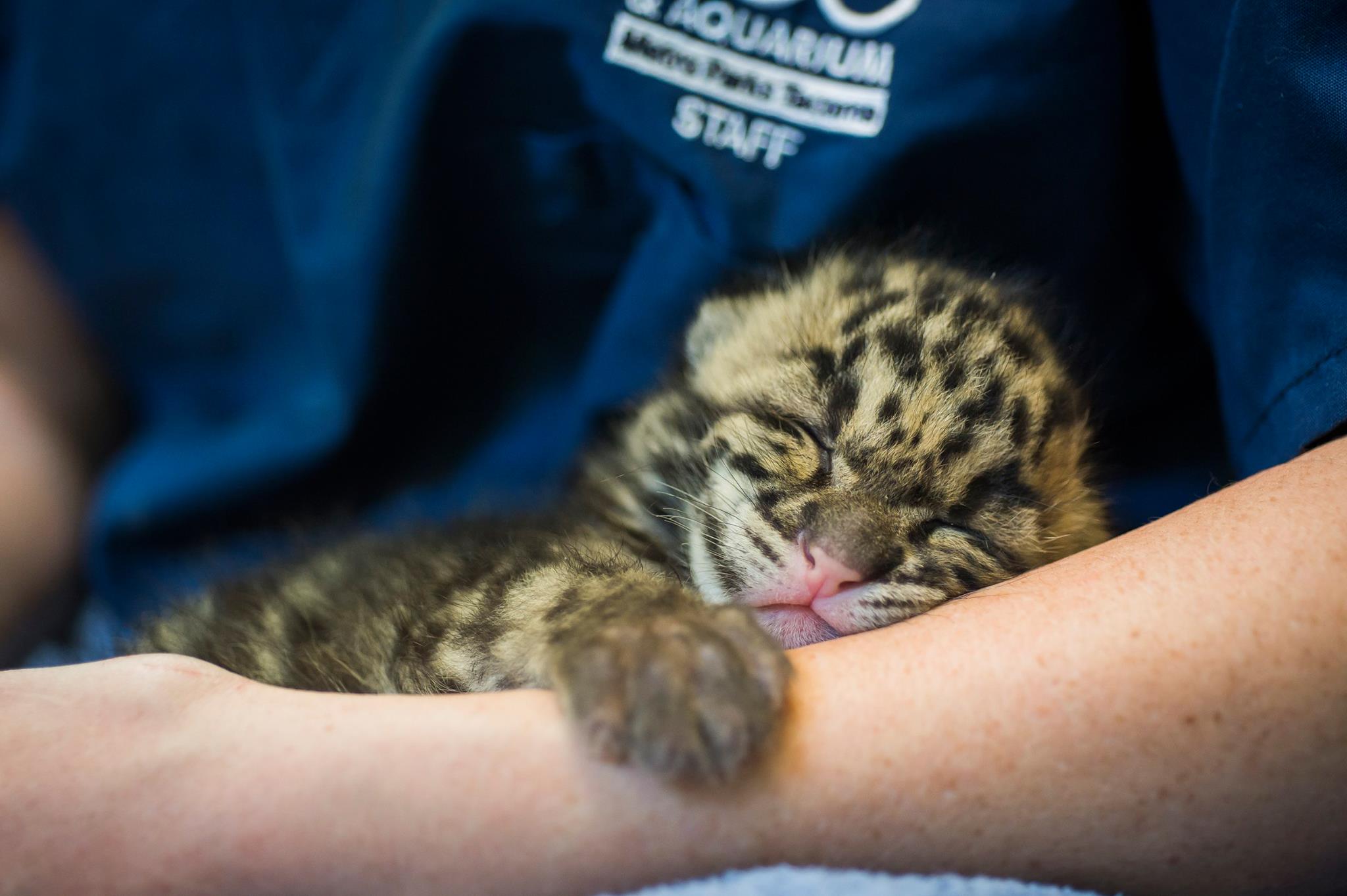3-Week-Old Triplet Clouded Leopard Cubs Make Debut at Washington State Zoo
The clouded leopard cubs were born March 30 and require six feedings a day.
— -- Three-week-old clouded leopard cubs made their debut at a Washington State zoo today.
The triplets, two boys and a girl, were born March 30 at the Point Defiance Zoo & Aquarium in Tacoma and are "growing fast," the zoo said on Facebook. They require round-the-clock care and six feedings a day, according to the zoo, which described the cubs' condition as "healthy."

Several hundred people have showed up to the zoo to see the cubs during a feeding today, said Karen Povey, the zoo’s education curator, adding that they “melt everyone’s hearts.”
“There’s lots of enthusiasm for their big debut,” Povey said, calling the interest “terrific.”
Povey said she hopes people connect with the cubs so they’re inspired to help conservation efforts in the future.
ABC affliate KOMO in Seattle posted a 360-degree video of the cubs during a feeding Thursday.
The cubs have still not been named, but people can help name them by voting here. The name choices for the female cub are Saffron and Cassia, and the choices for the male cubs are Basil, Masala, Coriander ("Cori") and Chili.
Povey said the cubs’ unique personalities will begin to develop in upcoming weeks.

Clouded leopards are named for their thundercloud markings, the zoo said. They are "so shy and elusive" that scientists do not have an accurate estimate of their population in the wild.




